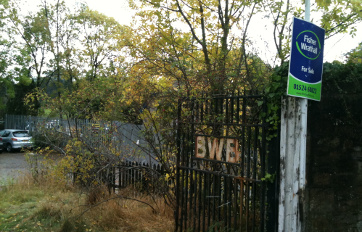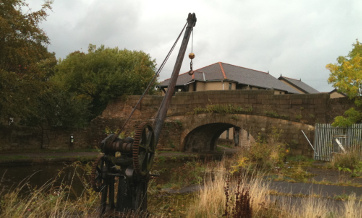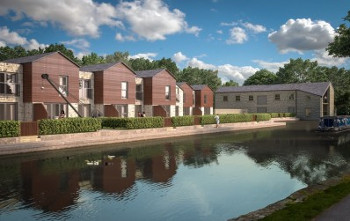A TWO acres canal wharf in the historic City of Lancaster in proximity to prime tourist locations, has been sold off for luxury housing development, writes Eric Weiss.
 Formerly a BWB maintenance depot, the site contains listed and modern buildings with a stone edged wharf water frontage and is close to a conservation area. The land and its buildings it could be argued, were highly suitable for updating to serve as a modern maintenance facility, eminently placed and practical, waiting only to be updated and re-energised, as a hub to service the canal infrastructure but with a 21st Century leisure focus and heritage function.
Formerly a BWB maintenance depot, the site contains listed and modern buildings with a stone edged wharf water frontage and is close to a conservation area. The land and its buildings it could be argued, were highly suitable for updating to serve as a modern maintenance facility, eminently placed and practical, waiting only to be updated and re-energised, as a hub to service the canal infrastructure but with a 21st Century leisure focus and heritage function.
 Dual potential
Dual potential
It had great dual-potential not only as a skill-training centre, but also as a practical sub-headquarters for administration of this unique and most northern coastal canal, instead of the dilapidated, incongruous Galgate site which is essentially a soul-less BWML enterprise and sanitary station and home to a small disillusioned CaRT workforce.
Rather than restore and enhance its position as a practical canal focused resource as had been its original purpose, the custodians charged with its stewardship have quietly hived off this potential jewel in the crown of the Lancaster Canal for short term financial gain. Apart from its loss to our local and national industrial heritage, it has been sold off with planning permission for homes on 14 plots, some with waterside frontage including one with an ‘almost affordable' £400k price-tag. It includes the conversion to dwellings of the two listed buildings. The picture below shows an artist's impression of the completed development.
 No desire to preserve
No desire to preserve
In a housing sense and by way of comparison, a two acres site in Bolton has planning permission for 32 houses which one would be led to expect. But Lancaster City Council do not see the need or desirability of ‘affordable' housing and this exposes CaRT's apparent lack of sense of purpose and foresight or desire to preserve and enhance our canal heritage which is sadly all too evident.
